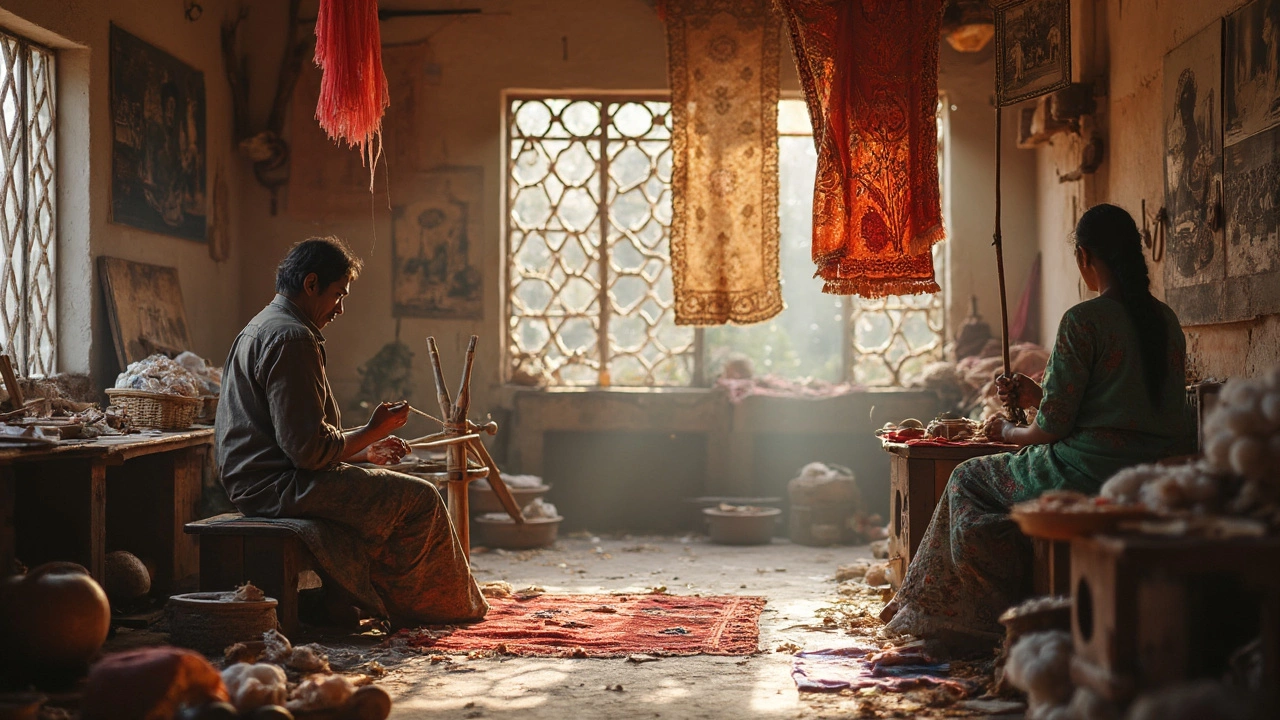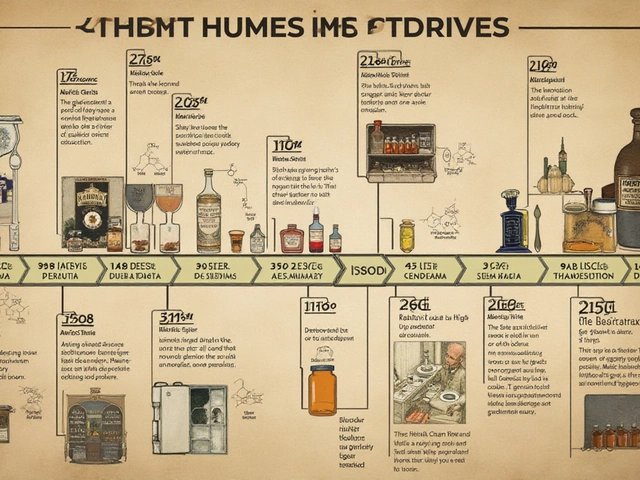Cotton isn’t called the queen of textiles for nothing. If you grab ten pieces of clothing out of a busy Indian home, chances are most of them are made of cotton. It’s everywhere: on sarees, bedsheets, crisp shirts, comfy pajamas—even on my son Vedant’s favorite school uniform and Rolo’s summer dog bedding. But what gives cotton this royal status?
It comes down to comfort, durability, and how ridiculously easy it is to work with. Cotton stays cool in hot weather (a lifesaver in Indian summers), soaks up sweat fast, and feels soft against the skin. Textile manufacturers love it because the fibers are strong but not stubborn, which means less headache when spinning and weaving. Local farmers get in on the action too, since India is one of the world’s top cotton producers. That means you’re probably wearing something homegrown—quite literally!
- Why Cotton Is Called the Queen of Textiles
- How Cotton Shapes Indian Textile Manufacturing
- Top Cotton Textile Hubs in India
- Tips for Identifying Quality Cotton
- What the Future Holds for Cotton in India
Why Cotton Is Called the Queen of Textiles
Cotton’s nickname as the queen of textiles isn’t just a catchy phrase. It’s backed by numbers, history, and everyday experience. Around 60% of India’s textile exports are cotton-based, so when you think of Indian fabric, cotton almost automatically comes to mind.
People have been using cotton in India for thousands of years. There are actual archaeological finds from the Indus Valley Civilization—think over 4,000 years ago—showing people spinning and weaving cotton. Fast forward to now, India is either the world’s top cotton producer or fighting for that spot with China and the U.S., depending on the year. That’s huge for jobs, farming, and the local economy.
So why does cotton beat everything else? Here’s what makes it so special—both for wearers and manufacturers:
- All-Season Comfort: Stays cool in the summer, doesn’t itch, and it’s light enough to layer up during winters.
- Easy to Dye: Cotton fibers grab onto color well, so you get those rich sarees and bright kurtas that never seem to fade away.
- Breathable and Absorbent: Sweat a lot? Cotton handles it. It doesn't trap heat or sweat against your skin.
- Hypoallergenic: Sensitive skin? Cotton’s usually safe, even in kids’ clothing and baby swaddles.
- Biodegradable: Toss away old cotton and nature breaks it down—unlike synthetic fabrics that just stick around.
Check out this quick comparison to see how cotton stacks up against other fabrics:
| Fabric | Breathability | Comfort | Eco-Friendliness | Cost |
|---|---|---|---|---|
| Cotton | High | Very High | High | Affordable |
| Polyester | Low | Medium | Low | Cheap |
| Silk | High | High | Medium | Expensive |
| Wool | Medium | Medium | Medium | Expensive |
The textile industry in India depends on cotton to an incredible extent because the supply is local, the labor skills are deep-rooted, and the demand never seems to dip. Next time you’re picking out a shirt or a set of bedsheets, you’ll know why cotton’s always the front-runner.
How Cotton Shapes Indian Textile Manufacturing
Cotton isn’t just a fabric, it’s the backbone of India's textile economy. About 60% of the country’s textile and apparel exports involve cotton textiles. That’s a massive chunk, and you feel it everywhere, from big mills in Gujarat to tailors in small towns. Because it’s grown in so many states—Gujarat, Maharashtra, Telangana, and more—it creates millions of jobs, both on farms and in textile factories.
The queen of textiles powers everything from rural employment to India’s status as a top global exporter. Cotton mills aren’t fancy places, but they keep the industry running with ginning (that’s cleaning and separating fibers), spinning, weaving, and dyeing. Sometimes the same small town will have family-run spinning shops right next to shiny new factories churning out cotton T-shirts for big international brands.
| Cotton Stat | India's Numbers (2023-24) |
|---|---|
| Share in Indian textile production | ~60% |
| Employment in cotton sector | ~45 million people |
| Global cotton producer rank | 2nd (after China) |
| Major cotton-producing states | Gujarat, Maharashtra, Telangana, Andhra Pradesh, Punjab |
Factories linked to big brands often locate near cotton-growing areas to save on transport. This means cotton is processed, spun, dyed, and stitched close to where it’s picked. Local supply chains help keep cotton clothes affordable. On the flip side, there’s a challenge: cotton crops need a lot of water. So, big textile hubs invest in water recycling and smarter farming methods to make production more sustainable.
- Cotton brings job security to millions—farmers, spinners, weavers, transporters, and more.
- Most school uniforms, bedsheets, and even fancy handlooms in Indian homes start their journey in a cotton field.
- The cotton sector supports a huge community of small entrepreneurs, not just huge companies.
It’s hard to imagine Indian textile manufacturing without cotton holding the whole thing together. If you’re buying a cotton kurta or shirt, chances are you’re not just getting comfort—you’re also supporting a massive network of Indian workers and families.

Top Cotton Textile Hubs in India
If you’re looking for the heart of India’s cotton textile scene, a few cities and regions immediately jump out. These places churn out massive amounts of cotton fabric and have built up entire industries, economies, and even cultures around it. No surprise, we call this the land of the cotton queen of textiles.
Here are some top cotton textile hubs to watch:
- Ahmedabad, Gujarat: Folks call it the “Manchester of India.” Walk down any street here and you’ll spot mills, big and small, at work. Gujarat pumps out over a third of India’s total cotton output. The city’s mills process everything from raw cotton to the final fabric—all under one roof. Some old mills are over 150 years old!
- Coimbatore, Tamil Nadu: This city’s all about spinning mills. Nearly every local family has someone tied to the textile sector. Coimbatore is famous for its yarn and has more than 600 mills. Most of South India’s handlooms and powerlooms use yarn spun right here.
- Ichalkaranji, Maharashtra: This place might be less known outside fashion circles, but inside India, it’s ‘the textile city.’ There are thousands of looms—most small-scale, family-run setups making soft cotton fabrics for everyone, from your neighborhood tailor to big fashion brands.
- Surat, Gujarat: You might know Surat for its diamonds, but the city’s textile trade creates lakhs of jobs. They handle a lot of blending and printing work, with a chunk of India’s sarees, dress materials, and home textiles coming straight out of Surat’s bustling units.
- Ludhiana, Punjab: It’s not just about wool. Ludhiana has a booming cotton knitwear industry, especially t-shirts and casual clothes. They even export worldwide.
The numbers really tell the story. Check this out:
| City/Region | No. of Mills/Units | Major Products | Key Fact |
|---|---|---|---|
| Ahmedabad | ~100+ large mills | Cotton fabrics, denim | Gujarat: 35% of India’s cotton output |
| Coimbatore | 600+ spinning mills | Yarn, cotton textiles | Known as "Textile Capital of South India" |
| Ichalkaranji | 20,000+ powerlooms | Grey fabric, suitings | Major exporter to Middle East and Europe |
| Surat | 400+ processing units | Sarees, dress material | 65% of India’s synthetic textiles too |
| Ludhiana | 1,000+ knitwear units | T-shirts, knit fabric | Biggest manufacturer of cotton knitwear |
“India’s cotton textile sector is not just about numbers—it's the lifeline for millions of workers and the backbone of many regional economies.” — Textile Ministry, Government of India report, 2024
Each city runs its show a bit differently. While Ahmedabad focuses on big mills, Ichalkaranji’s powerlooms thrive in locals’ backyards. Coimbatore’s engineering colleges even feed the textile sector with young talent. When you choose Indian cotton, chances are it’s passed through a few of these hubs on its way to your wardrobe or home.
Tips for Identifying Quality Cotton
Ever wonder how to tell if that soft shirt or fancy bedsheet is actually top-notch cotton? You don’t need a microscope—just a bit of know-how and maybe a keen eye like my kid, Vedant, pulling apart the threads of his T-shirt, trying to figure out why some feel "itchy" and others don’t.
Here’s what makes the queen of textiles—cotton—stand out, and how you can spot quality when you’re shopping:
- Check the feel: Good cotton feels smooth and never scratchy. Rub it between your fingers; high-quality cotton glides, while lower grades might feel rough or stiff.
- Look at the weave: Hold the fabric up to the light. Top-quality cotton has a tight, even weave. If you see a lot of gaps or uneven threads, it’s probably not the best.
- Do the wrinkle test: Squeeze the fabric in your hand for a few seconds, then let go. Pure cotton wrinkles easily, so if it springs right back, chances are it’s mixed with synthetic fibers.
- Check for pilling: Run your hand over the material. Cheap cotton pills and sheds quickly, while good cotton stays smooth even after many washes.
- See the color: High-quality cotton takes dye evenly. If the color looks patchy or faded in places, think twice before buying.
For the nerdy types (or parents like me who want value for their money), here’s a quick breakdown of the most common cotton types you’ll see in Indian stores:
| Type of Cotton | Origin | Famous For | Usual Price Range (per meter, ₹) |
|---|---|---|---|
| Egyptian Cotton | Imported | Lustrous, long fibers | 800 - 2,500 |
| Supima Cotton | Imported/Some Indian Farms | Soft, very durable | 700 - 2,000 |
| Indian Cotton (Shankar-6, MCU-5 etc.) | India | Breathable, everyday wear | 50 - 450 |
Not sure if you’re picking right? Here’s a tip from textile expert Neeru Kumar:
“Real quality cotton is like good rice—soft but not weak, smooth but not slippery, and lasts years even with daily use.”
Don’t forget: labels can lie, but your hands and eyes usually don’t. Trust your senses. And if you’re shopping at a local bazaar, ask the seller about the source of the cotton. Local brands often boast about it with good reason.

What the Future Holds for Cotton in India
The next few years for cotton in India look anything but boring. For starters, demand is growing fast. Not just in local markets but also in countries snapping up Indian fabrics—think Bangladesh, Vietnam, and big Western brands. India shipped out over $10 billion worth of cotton textiles in 2024. That’s a huge number, and it shows the world can’t get enough of Indian cotton.
At the same time, cotton farmers and manufacturers face big challenges. Pests, water shortages, and unpredictable rain mess things up. But smart farming is catching on. Many farms are using drip irrigation to save water and going for organic cotton, which fetches a better price. Some companies are even turning cotton waste into things like home insulation, which means less goes in the trash.
Another change? Machines. Indian textile factories are adding modern spinning and weaving machines. The goal isn’t to replace workers but to make production faster and the final product more consistent. That helps Indian manufacturers stay sharp against competition from China and Turkey.
Eco-friendly cotton is another trend. More brands want proof that the cotton they use is safe for the land and for people—no nasty chemicals. If you buy clothes with the “organic” or “BCI” labels (Better Cotton Initiative), those are good signs. These standards are popping up in stores everywhere, even in smaller Indian cities.
With all these changes, one thing remains constant: the queen of textiles isn’t giving up her throne. As long as folks want soft, breathable clothes and farmers keep finding smart ways to grow, cotton’s future in India looks plenty bright.










